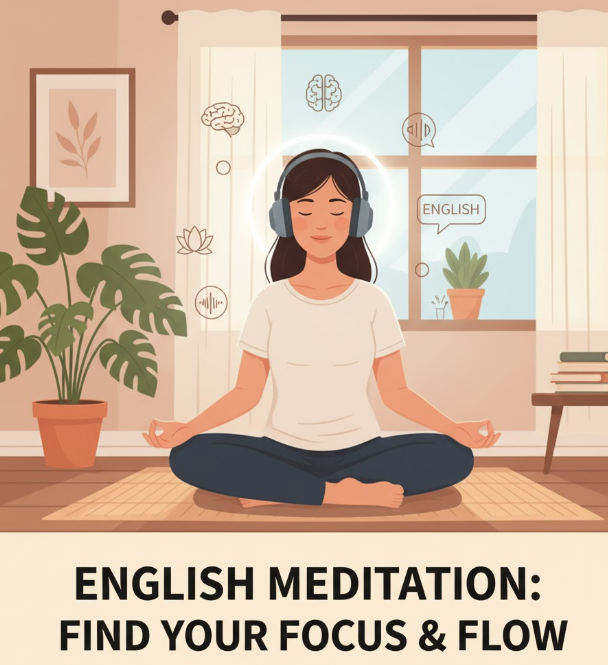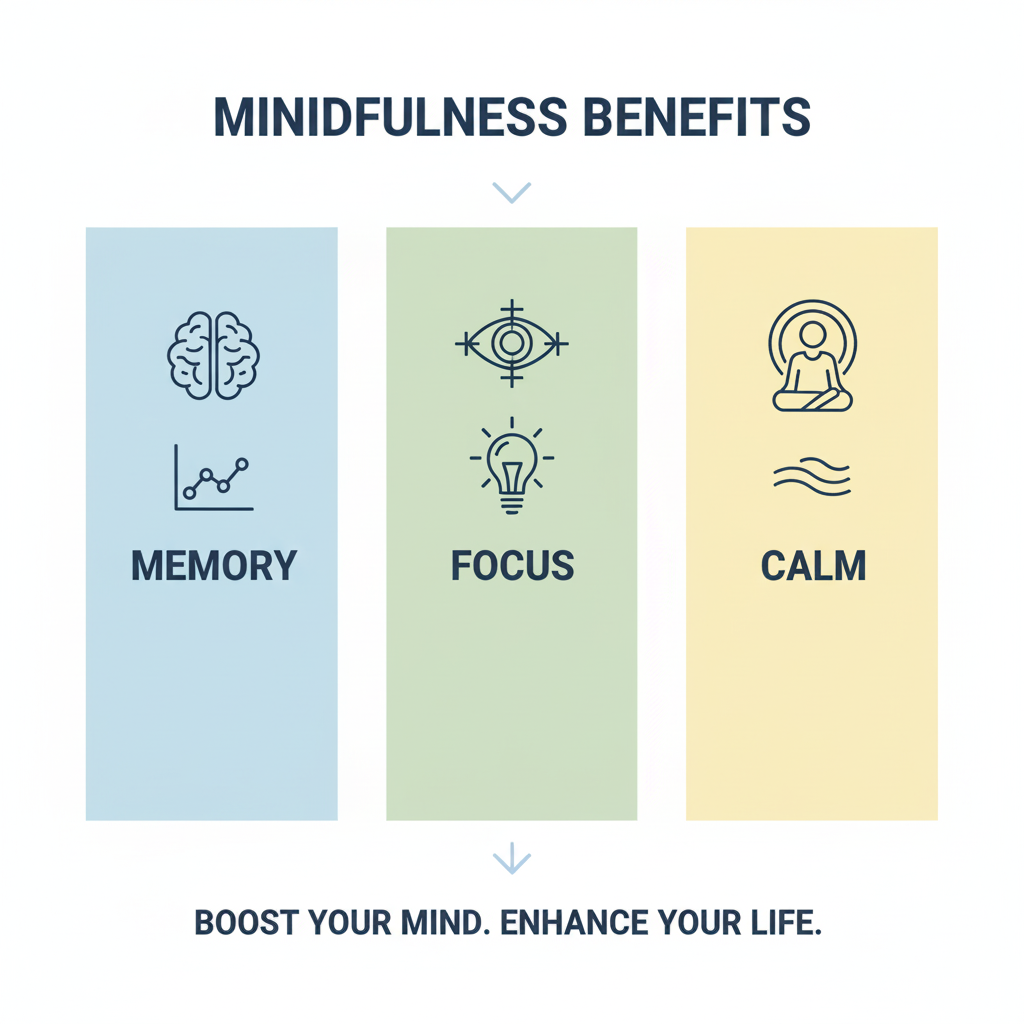So, You’re Learning English and Losing Your Mind?
Yeah, it happens. You open your English book, see something called a “phrasal verb,” and suddenly your brain just… shuts down. You tell yourself “I’ll just take a short break”, and three hours later you’re watching YouTube videos about cats who meow in perfect rhythm.

Congratulations, you’re officially stressed.
But here’s a thought — what if the problem isn’t your brain, but your relationship with your brain?
Practicing meditation and mindfulness while learning English might sound like a lifestyle ad, but it’s actually the most underrated language-learning tool out there. It doesn’t just calm your nerves; it upgrades your focus, memory, and emotional resilience — basically all the things grammar rules destroy.
And if you’ve ever panicked mid-sentence during a conversation, you should also check out Overcoming English Speaking Anxiety. Trust me, it’s like therapy, but cheaper.
What Are Meditation and Mindfulness? (And Why Should English Learners Care?)
Spoiler: It’s Not Just “Sitting and Doing Nothing”
Meditation isn’t magic. It’s more like defragmenting your mental hard drive. You stop. You breathe. You watch your thoughts run around like toddlers on sugar and then—poof—everything slows down.
Mindfulness is the art of staying aware during all of it. You observe your thoughts like you’re watching bad TV: detached, mildly entertained, and definitely not participating.
Science agrees that mindfulness improves memory and focus, and that’s kind of useful when you’re trying to remember how many conditionals there are and why they exist at all.
If you’re curious about how your brain actually reacts while learning, check out English Learning and Brain Health. It’s a deep dive into how to train your memory without crying.
Managing Stress While Learning English
Grammar-Induced Panic Attacks Are Real
English learners deal with a special kind of stress — that “my mouth knows the words but my brain forgot English exists” kind of stress.

When that happens, meditation is your secret weapon. Studies show even five minutes of deep breathing can lower cortisol levels, which means less internal screaming and more actual learning.
Try this:
- Sit down. Preferably not on your anxiety.
- Close your eyes.
- Inhale for four seconds, hold for two, exhale for six.
- Do this until your heart rate stops doing backflips.
Boom. You’re calmer, smarter, and about 12% more fluent already.
If you want a full routine that blends mindfulness and daily English habits, read Integrating English into Your Daily Routine. You’ll either find balance or realize coffee is not a mindfulness strategy.
Quick question: what’s your number one trigger — grammar, pronunciation, or the word “fluency” itself?
English Meditation Scripts: Calm Down While You Learn
Practical Zen for English Learners Who Overthink Everything
Look, you don’t need to become a monk or download 12 meditation apps. You just need five minutes and a brain that’s willing to stop spinning.
Here are a few English meditation script ideas to get you started:
1. The “Breathe and Listen” Script
Open YouTube. Search “5-minute guided English meditation.” Follow the voice. Listen to each word, not to understand — just to notice.
It’s listening practice disguised as a mental spa day.
2. The Affirmation Trick
Repeat after me:
“I learn at my own pace.”
“My mind is calm, my words flow easily.”
“Mistakes are just weird little teachers.”
Say them out loud — it’s free therapy and pronunciation practice.
3. Vocabulary Visualization
Choose 5 new words.
Inhale while imagining the word.
Exhale as you say it in your mind.
You’re not just memorizing vocabulary — you’re emotionally imprinting it.
Want to sound more natural when using those words? Read English Collocations for Natural Fluency. Because “make a mistake” is fine, but “do a mistake” makes English cry.
How Mindfulness Makes You a Better English Learner
The Secret Sauce: Attention
Mindfulness turns your chaotic studying into intentional learning.
When you pay attention to your attention, everything changes — you stop memorizing and start noticing.

Here are some techniques to level up your mindfulness game:
- Mindful Listening: Tune in to rhythm, tone, and pauses. Try it with Guide to Understanding Fast Native Speakers.
- Mindful Speaking: Slow. Down. Words are not running away.
- Mindful Reading: One deep breath before every paragraph — your brain will thank you later.
Ten minutes a day of focused awareness can do more for your fluency than three hours of distracted studying. (Yes, that includes the time you spent scrolling TikTok under the desk.)
Conclusion: Breathe First, Learn Later
The best English learners aren’t the ones who know all the grammar rules — they’re the ones who don’t panic when they forget them.
Meditation and mindfulness while learning English teach you to stay present, focused, and, most importantly, kind to yourself.
Next time you forget a word, don’t spiral. Just breathe, smile, and try again. You’re learning English, not auditioning for stress Olympics.
If you want to make mindfulness part of your learning journey, start journaling about it — this guide will help: Language Journal Guide.
Frequently Asked Questions (FAQ)
1. Does meditation really help with English learning?
Yes. Meditation improves focus, emotional control, and memory. In plain English: you’ll forget fewer words and panic less.
2. How often should I meditate?
5–10 minutes daily is plenty. Consistency beats intensity (and burnout).
3. Can I use English guided meditations to practice listening?
Absolutely. Try Headspace or Calm. You’ll be improving your listening skills without realizing it.
4. Is mindfulness different from meditation?
Mindfulness is the act of paying attention. Meditation is the training for it. One’s the gym, the other’s the workout.
5. How does mindfulness help with stress reduction?
It stops the mental overreaction. When you breathe, focus, and stay present, English becomes less of a monster and more of a curious puzzle.
